Samsung Galaxy S 2 (International) Review - The Best, Redefined
by Brian Klug & Anand Lal Shimpi on September 11, 2011 11:06 AM EST- Posted in
- Smartphones
- Samsung
- Galaxy S II
- Exynos
- Mobile
Inside SGS2
There have been a number of teardowns of the SGS2, and for the most part usually there isn’t a need to open up devices unless the FCC photos don’t suffice. This time around I still have a number of questions about what component choices had been made for the SGS2, so it went under the screwdriver (and emerged unscathed) just so we could get a glimpse at the goods.
SGS2 comes apart easily enough, with a few philips (no Torx bits) screws on the back and then a couple prods with a plastic tool to get the snaps off. Construction in this regard is very similar to the original SGS. After that, you have access to the PCB, backside, and frame.
You can see how SGS2 achieves its thinness by looking at the layout. The PCB doesn’t run underneath the battery - the majority of device thickness is defined by the SAMOLED+ panel plus battery thickness.
In addition, the SGS2 locates the cellular antenna at bottom in a modular speaker plus antenna module that snaps in and out of the plastic backside. The depth of SGS2 at its thickest seems governed by this speaker and its resonating chamber. Off to the other side is the bottom microphone, cellular feed cable, and gold contacts for getting that connected to the silver antenna.
There’s another second antenna to the opposite side of the module, which is for Bluetooth and WiFi.
If we turn our attention to the PCB we can see the rest of SGS2’s interesting bits.
The EMI cans thankfully snap off easily, and underneath we can see right next to the microSD card slot is the Infineon/Intel X-Gold 626 HSPA+ (HSDPA Cat. 14 - 21 Mbps / HSUPA Cat. 7 11.5 Mbps) baseband.
On the opposite side is the Audience 1026 noise cancelation IC, MAX8997 PMIC, and Yamaha YMU823 audio codec.
On the same side further down is the GPS that SGS2 uses, which is a SiRF GSD4T GPS. That particular die is absolutely tiny and difficult to photograph. More on the SGS2 GPS in a moment, however.
The other side of the PCB is much more interesting.
With the cans off, first we get a shot of Exynos 4210 with its PoP memory. This particular part has two mobile LPDDR2 die in the stack. Next to it, a Samsung combo NAND + DRAM part, with 16 GB of NAND and 64 MB of RAM, no doubt for the Infineon baseband.
Moving right is the Infineon Smarti UE2 RF transciever marked 5712, and the large IC below that marked RFMD RF6260 is a quad-band multi mode power amp which is a bit interesting. It works between 1710 and 1980 MHz, and 824–915 MHz, supplanting somewhat the need for individual power amps for each band.
Down on the long and skinny part of the PCB is a large package which I believe probably houses the BCM4330 WLAN module (more on that later), and next to it is a button cell battery, which seems curious.
Now remember that camera part I mentioned earlier? Well, at the top of the board you can see a ZIF slot, a relatively large IC< and then the camera module.
Compare these two, and it seems pretty obvious that this is exactly that same camera module from earlier, and most likely the large IC with Korea written on it is the Fujitsu M5MO ISP which controls it.
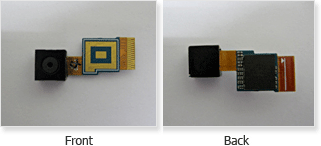
Also up at the very top is another gold connector which meets up with the SGS2’s third antenna, whose purpose is either for WLAN/GPS or another Rx finger for the cellular baseband.
The circular thing with a foam backside is the SGS2’s vibration motor, and other than that there really isn’t much more to talk about. Heat gets carried away from ICs through the EMI cans which double as heatsinks, and on the backside of the plastic back you can see a metal region and small thermal pad.


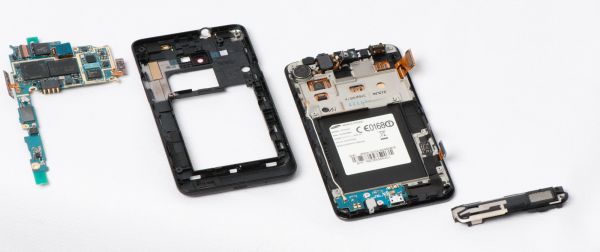
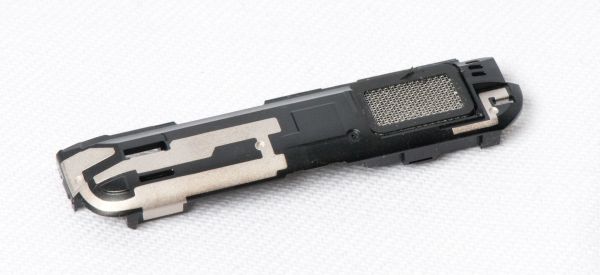
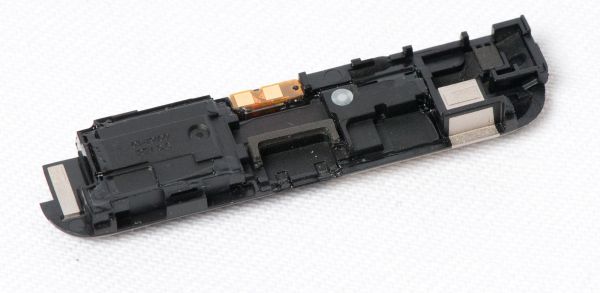

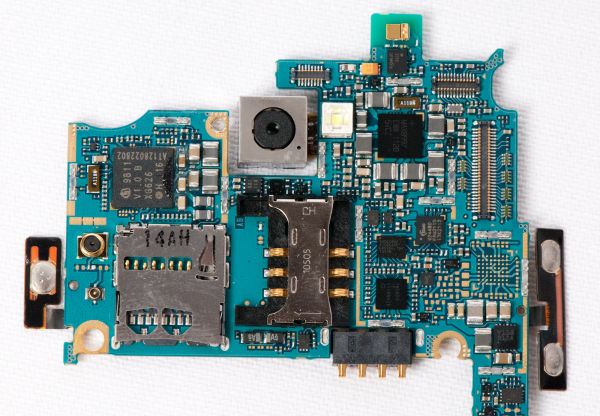
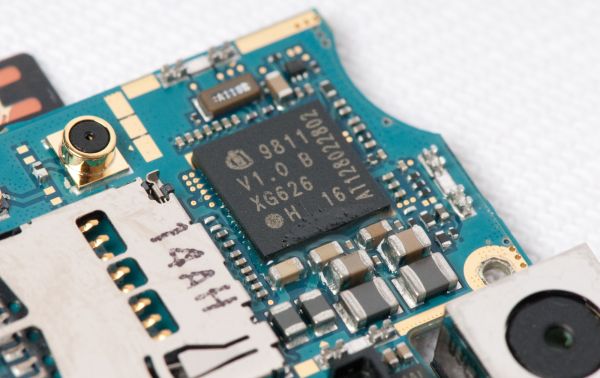
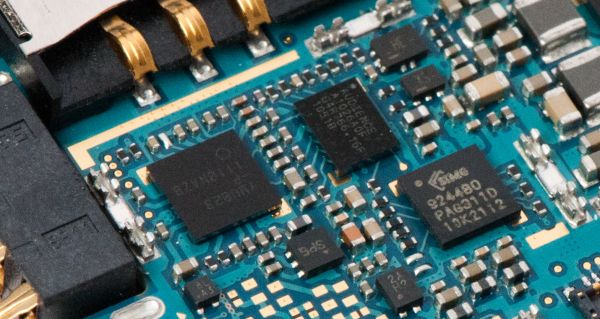
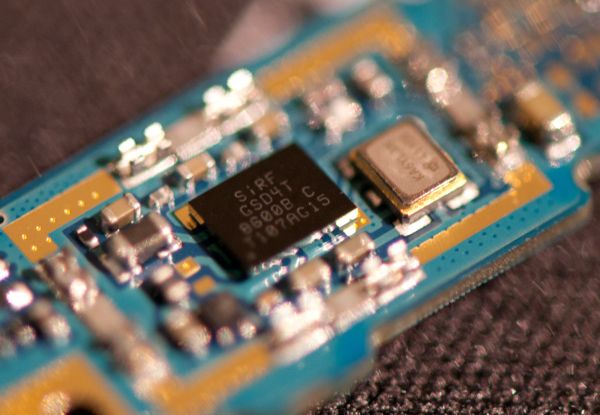
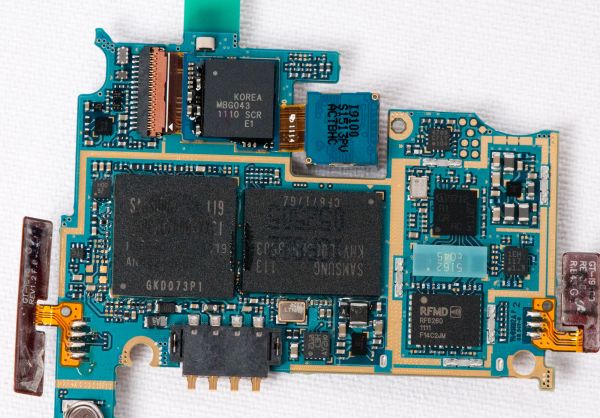
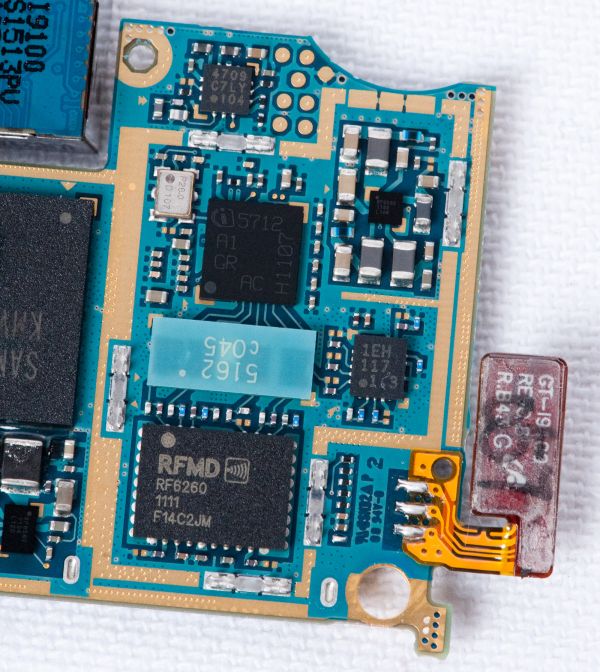
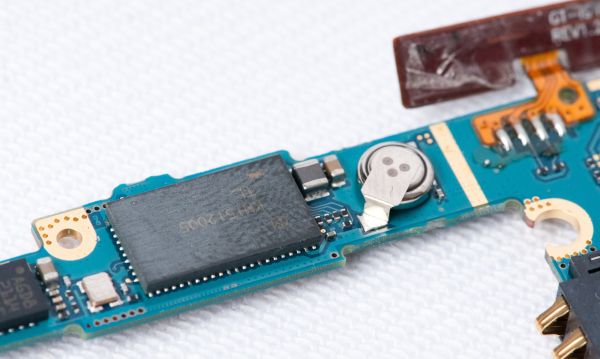

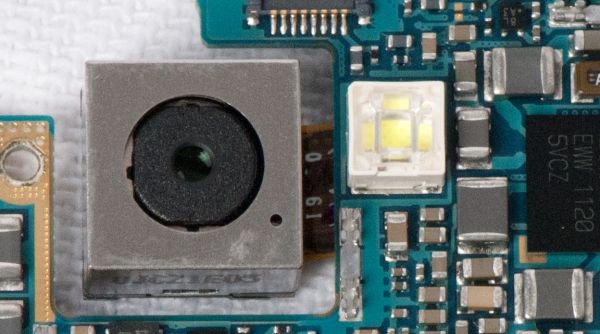















132 Comments
View All Comments
dagamer34 - Sunday, September 11, 2011 - link
On pg 15, Galaxy S uses a SGX 540 GPU, not 530. Other than that, great review!Synaesthesia - Sunday, September 11, 2011 - link
Staggering review, you really are the most comprehensive and scientific reviewer around, bravo!Samsung have really impressed with this phone, in terms of how much effort they have invested in the hardware and software. One thing still stands out for me, the battery life. While good, it still doesn't hold a candle to the iPhone 4, as shown on the charts.
LostViking - Saturday, September 17, 2011 - link
What do you mean?Its about 30% worse when web browsing (mostly because of the much larger screen I reckon), but better in the other tests.
If you are one of those old timers who actually use the phone for talking the SGSII is about 30 better ;)
When I am low on battery, and don't have access to a charger, that's usually what I would prioritize.
xdrol - Sunday, September 11, 2011 - link
For me the mentioned Cat 5 limit looks reasonable - you don't get user-level 2.0 Mbps because of the overhead of the PDCP/RLC/MACd protocols (about 15% -> 2.0 Mbps is 1.7 Mbps for IP).wilky76 - Sunday, September 11, 2011 - link
Alot of people that have the Samsung Galaxy S2 are suffering from framerate problems when using either 720p or 1080p in low light including myself.What basically happens is when the camera tries to focus in lowlight the framerates drop to around 13fps, then jump back upto around 30fps again, basically making any HD video recording useless in low light because of the stuttering, the only fix that is known is to drop the exposure to -2 as this stop the stuttering, or use 480p when indoors or poor light.
Some folks have returned their SGS2 because of this problem, only to receive another with the same problem.
There has been a couple of camera firmware updates on Samung own app site, which to this date still hasn't sorted the problem out & in some cases people that weren't suffering from this problem, now have it after updating the camera firmware.
Can any of you guys at Anandtech test your SGS2 in low light with either 720p or 1080p to see if the mobile you received for reviewing also suffer from this problem.
But what is strange is that not everbody has the framerate problem, so it could be due to which sensor you get with your SGS2, and could proberly be sorted with a firmware update eventually.
Anyways people with this problem and there is a few can be found in this post over at XDA
http://forum.xda-developers.com/showthread.php?t=1...
DrSlump - Monday, September 12, 2011 - link
Hi, i have exactly the same problem with my samsung galaxy s2.I got casual stuttering (a frame loss) during normal light conditions and severe stuttering under low light conditions.
As soon as the firmware raises the sensor gain to match the detected light, the framerate goes down to 25fps and when autofocus occours the framerate goes down to 13fps, and then returns back to 25fps when the autofocus is finished.
I olso noticed that when i try to frame a tv or a monitor, severe banding occours. Even taking a video when the light source is a tv or a monitor, banding occours. Seems like the isp isn't able to compensate the frequency of the light source.
In a lot of situations it's impossible to take a video due to the severe stuttering :(
Any one of you has these problems? How to solve it?
I would like to ask to the autor:
did you notice some problem with the display? There is a thread in the xda-developers forum that speaks about the yellow tinting or faded out left side of the screen. Please can you report about this problem?
B3an - Sunday, September 11, 2011 - link
Why dont you just admit it's the best phone around hands down? :) Not just the best Android phone. It's clearly miles superior to the outdated iPhone 4.Shame you yanks have had to wait forever to get it, only to get 3 different versions that dont even look as good and have ridiculous names. I've been using a GSII since April and it's just unmatched.
ph00ny - Sunday, September 11, 2011 - link
This yank got it on the UK launch day and i've been enjoying it sincesteven75 - Sunday, September 11, 2011 - link
It's not better in battery life, audio quality, display resolution and sharpness, or the many ways that iOS is better (AirPlay, app selection AND quality), immediate OS updates, etc).Gread Android phone though for those interested in 4.3" displays, which definitely isn't everyone. Personally, I'd wait for the Prime.
steven75 - Sunday, September 11, 2011 - link
Oh and outdoor display brightness, which even at 100% isn't a match for iPhone, but then it's even capped at 75% for temp reasons.